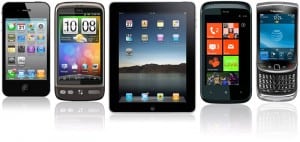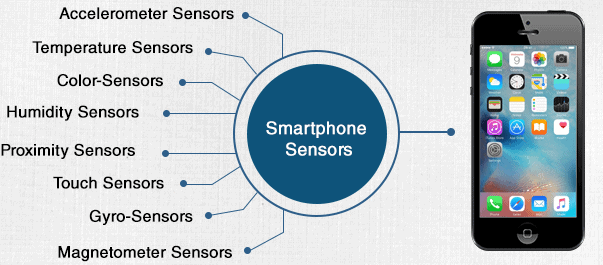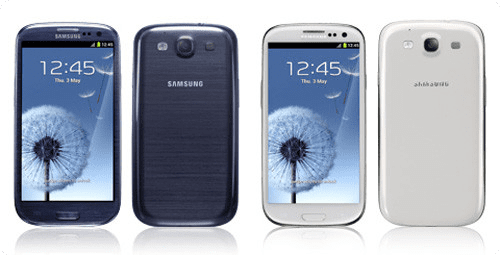What is a Sensor?
Sensors are devices which measure the physical energy (like temperature) and converts it into a signal (typically analog). Later this signal can be read or observed from an instrument or an electronic device (like a microcontroller) connected to the sensor. There are more than hundreds of types of sensors available in market today.
Most Android powered phones, Windows Phones, iPhone, all models of Samsung Galaxy Tab, Blackberry Os and other Os based smartphones have built-in sensors that measure the orientation, motion, light and other environmental conditions. These sensors are built to measure and provide a high precision & accurate data to the reader. For example, consider the airbag sensor placed in a car. Its main function is to trigger the airbag immediately after a collision. Just imagine what happens if this sensor doesn’t work properly or fail to provide accurate data. Result will be disastrous. So most of the critical sensors measure their inputs with a very high precision. There is no doubt in saying that sensors make our life simple and easy. That is the reason they are used widely in today’s world like in space shuttles, satellites, robots, automotive, planes, office, lift, smartphones and the list goes on…In this article we will be looking at the sensors used in a smartphone.
Sensors in Smartphone:
Today mobile devices are named as smartphones because they are not just used for handling the calls but for many other things like video recording, GPS navigation, Mp3, Wifi and in coming days it will also be used for mobile payment using NFC technology just like a credit card. With such smartness in it it is obvious that it will be consuming more power. Hence most of the sensors in a smartphone play an important role in reducing the power consumption. Smartphones have both hardware-based sensors and software-based sensors. The hardware-based sensors are physically present in the device and directly measure the environmental properties where as the software-based sensors are virtual sensors (not physical) which take their inputs from one or more hardware sensors for calculation. Go here if u want to read more android smartphones reviews.
List of sensors used in a smartphone are presented below:
- Accelerometer
Accelerometers are hardware sensors. They are the simple MEMS (Microelectromechanical System) devices which are used to measure position, motion, tilt, shock, vibration, and acceleration (the rate of change of velocity – m/s2). They are available with one, two, or three axes. A 3-axis accelerometer senses the orientation of the phone and changes the screen, images, web browser, music player accordingly, allowing the user to easily switch between portrait and landscape mode.
- Proximity Sensor
Proximity Sensor is a hardware-based sensor. It measures the proximity/position of an object in cm relative to the screen of a device. This sensor determines the position of the phone w.r.t the object. For eg: it measures the distance between the phone and face when the phone is brought near to face during a call. With this measurement the application can deactivate the display for saving the power and prevent any unintentional inputs caused from touching face/ear to the screen.
- Ambient Light Sensor
An ambient light sensor is a hardware-based sensor which is typically used for adjusting the display brightness hence saving the battery power. These sensors are made up of photocells which detect the presence of light in the environment. For eg: if a phone is used in a dark room where the presence of light is minimal, the phone works at its brightest since the ambient light sensor doesn’t detect the light hence no saving of the power. But it is the reverse case if a phone is used outdoor. Most of the smartphone manufacturers use this sensor in their devices by default.
- Compass
The Compass or magnetometer is a hardware-based sensor which can be used to determine the angle by which the device is rotated relative to the Earth’s magnetic north pole. The magnetic compass contains a magnet that interacts with the earth’s magnetic field and aligns itself to point to the magnetic poles. Simple compasses of this type show directions in a frame of reference in which the directions of the magnetic poles are due north and south. These directions are called magnetic north and magnetic south. It can be used as a navigational instrument. Nokia Lumia 610 has this sensor built-in.
- Gyroscope
The Gyroscope sensor is used to determine the rotational, spinning, turning velocity of the device in each axis. In other words it measures the angular rate of how quickly the object turns. World’s first Intel inside smartphone – Lava Xolo X900 has this sensor built-in.




